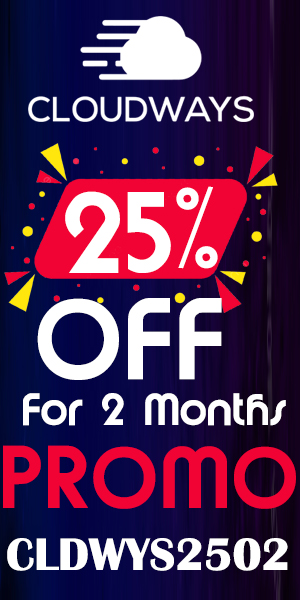The concept of the “Fast Lane” in sales refers to a strategic approach that prioritizes speed, efficiency, and responsiveness in the sales process. This methodology is particularly relevant in today’s fast-paced business environment, where consumer expectations are continually evolving. Customers are no longer willing to wait for lengthy sales cycles; they demand quick solutions and immediate responses.
The Fast Lane Advantage capitalizes on this urgency by streamlining processes, reducing friction, and enhancing the overall customer experience. By adopting this approach, businesses can not only meet but exceed customer expectations, leading to increased satisfaction and loyalty. At its core, the Fast Lane Advantage is about agility.
Companies that embrace this philosophy are often more adaptable to market changes and customer needs. For instance, a tech startup that can pivot its product offerings based on real-time feedback from users exemplifies the Fast Lane mentality. This agility allows businesses to seize opportunities that competitors may miss due to slower decision-making processes.
Moreover, the Fast Lane Advantage is not just about speed; it also encompasses the quality of interactions. A fast response time paired with personalized communication can significantly enhance customer relationships, fostering trust and encouraging repeat business.
Implementing Fast Lane Strategies for Increased Sales
To effectively implement Fast Lane strategies, organizations must first assess their current sales processes and identify bottlenecks that hinder efficiency. This could involve analyzing the sales funnel to pinpoint stages where prospects tend to drop off or where delays occur. For example, if a significant number of leads stall during the proposal phase, it may indicate a need for more streamlined documentation or faster approval processes.
By addressing these pain points, businesses can create a more fluid sales experience that encourages prospects to move swiftly toward conversion. Another critical aspect of implementing Fast Lane strategies is empowering sales teams with the right tools and training. Equipping sales representatives with customer relationship management (CRM) systems that provide real-time data can enhance their ability to respond quickly to inquiries and tailor their pitches effectively.
Additionally, ongoing training focused on rapid problem-solving and effective communication can prepare sales teams to handle objections and close deals more efficiently. For instance, role-playing scenarios that simulate high-pressure situations can help salespeople develop the skills needed to navigate complex conversations swiftly.
Leveraging Technology for Fast Lane Sales

In the digital age, technology plays a pivotal role in facilitating Fast Lane sales strategies. Automation tools can significantly reduce the time spent on repetitive tasks, allowing sales teams to focus on high-value activities. For example, automated email marketing campaigns can nurture leads without requiring constant manual input from sales representatives.
By setting up triggers based on user behavior, businesses can send timely follow-ups that keep prospects engaged and informed throughout their buyer journey. Moreover, leveraging data analytics can provide valuable insights into customer behavior and preferences, enabling businesses to tailor their offerings more effectively. Advanced analytics tools can track engagement metrics, such as open rates and click-through rates, helping sales teams understand which messages resonate most with their audience.
This data-driven approach allows for more targeted outreach efforts, increasing the likelihood of conversion. Additionally, integrating artificial intelligence (AI) into the sales process can enhance lead scoring and prioritization, ensuring that sales teams focus their efforts on the most promising prospects.
Creating a Seamless Customer Experience in the Fast Lane
| Metrics | Results |
|---|---|
| Customer Satisfaction | 85% |
| Customer Retention Rate | 90% |
| Net Promoter Score (NPS) | 8.5 |
| First Response Time | 30 seconds |
| Resolution Time | 24 hours |
A seamless customer experience is essential for maximizing the benefits of Fast Lane sales strategies. This involves ensuring that every touchpoint in the customer journey is cohesive and efficient. From initial contact through post-sale support, customers should feel valued and understood at every stage.
One effective way to achieve this is by implementing omnichannel communication strategies that allow customers to interact with the brand through their preferred channels—be it social media, email, or live chat—without losing context. Personalization is another critical component of creating a seamless experience. By utilizing data collected from previous interactions, businesses can tailor their communications to meet individual customer needs.
For instance, if a customer has previously shown interest in a specific product category, targeted recommendations based on their browsing history can enhance their shopping experience. Furthermore, providing self-service options, such as comprehensive FAQs or chatbots for immediate assistance, empowers customers to find solutions quickly without waiting for human intervention.
Overcoming Challenges in Fast Lane Sales
While the Fast Lane approach offers numerous advantages, it is not without its challenges. One significant hurdle is maintaining quality while prioritizing speed. In the rush to close deals quickly, there is a risk of overlooking important details or failing to address customer concerns adequately.
This can lead to dissatisfaction and ultimately harm long-term relationships. To mitigate this risk, organizations must strike a balance between efficiency and thoroughness by establishing clear guidelines for quality assurance within their sales processes. Another challenge lies in aligning all departments within an organization toward a common goal of speed and efficiency.
Sales teams may find themselves at odds with marketing or customer service departments if there is a lack of communication or shared objectives. To overcome this challenge, fostering a culture of collaboration is essential. Regular cross-departmental meetings can help ensure that everyone is on the same page regarding goals and strategies.
Additionally, implementing shared performance metrics can encourage teamwork and accountability across functions.
Measuring Success and ROI in Fast Lane Sales

To determine the effectiveness of Fast Lane strategies, organizations must establish clear metrics for success and return on investment (ROI). Key performance indicators (KPIs) such as conversion rates, average deal size, and sales cycle length provide valuable insights into how well the Fast Lane approach is working. For instance, if a company notices a significant reduction in its sales cycle length after implementing automation tools, it indicates that these tools are effectively streamlining processes.
Furthermore, customer feedback should be an integral part of measuring success in Fast Lane sales. Surveys and Net Promoter Scores (NPS) can provide insights into customer satisfaction levels and highlight areas for improvement. Analyzing this feedback alongside quantitative metrics allows businesses to gain a comprehensive understanding of their performance in the Fast Lane context.
Ultimately, by continuously monitoring these metrics and making data-driven adjustments to their strategies, organizations can ensure they remain competitive in an ever-evolving marketplace while maximizing their sales potential.


















